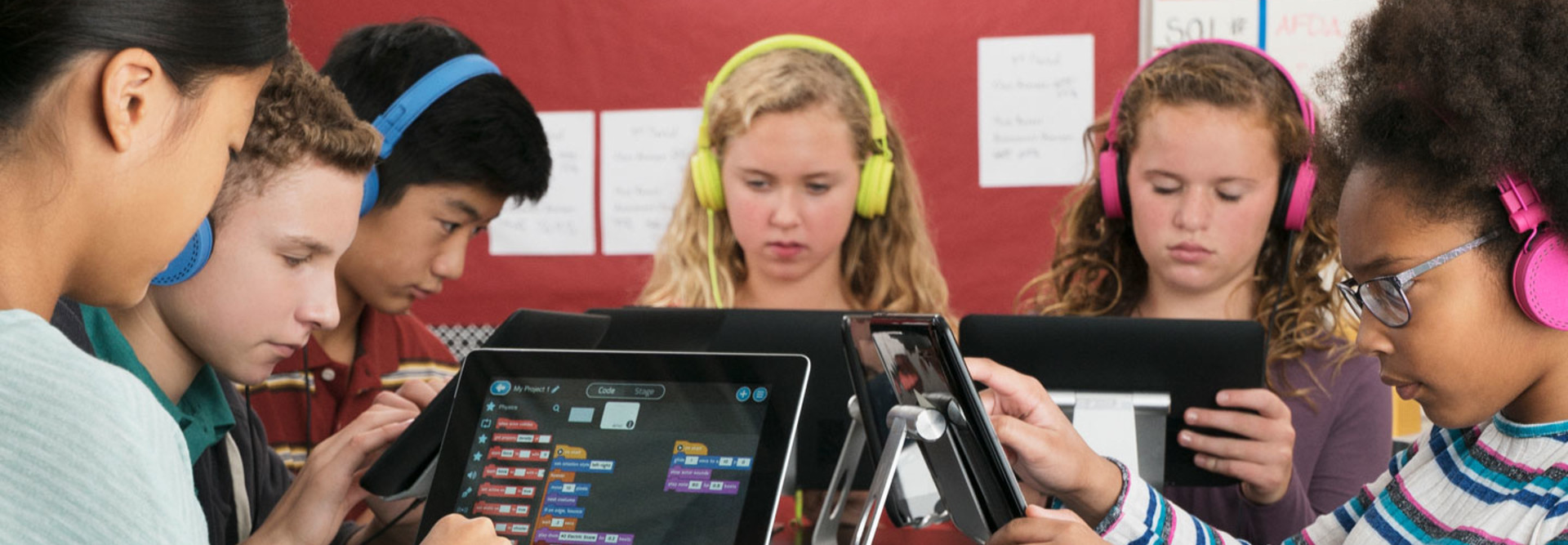Personalized Learning and Digital Tools Weave Strong Fabric for Student Success
Teachers in the U.S. have an overabundance of responsibilities, not the least of which is educating hundreds of eager minds each year and then sending them out into the world. But, are the students ready for what awaits them?
According to Project Tomorrow’s 2017 Speak Up Research Project for Digital Learning, 56 percent of parents of school-aged children are concerned that their child isn’t learning the right skills in school to be successful in college or a future job. They may be on to something.
As reported in April 2016 (the most recent year for which data is available from the National Assessment of Educational Progress) only 37 percent of high school seniors in the U.S. will be able to handle college-level reading, and only 25 percent will grasp college-level math.
SIGN UP: Get more news from the EdTech newsletter in your inbox every two weeks!
Personalized Learning Aids All Students
Traditional teacher-centered instructional practices, such as recitation or lectures, have given way to hands-on activities, student-led discussions, collaboration and group learning — all hallmarks of personalized learning.
An effective personalized-learning approach successfully threads digital tools into the mix, creating a solid fabric for students heading out into the modern working world.
Parents, teachers and administrators have had an overwhelmingly positive response to the effective use of digital tools in the classroom. In fact, two-thirds of responding parents from diverse communities (rural, suburban and urban) say in the Speak Up survey that classroom technology, when used properly, helps their children develop college and career readiness skills.
Collaboration and Blended Learning Fosters Critical Skills
Classrooms with digital tools allow students to collaborate in groups to problem-solve, which is a critical skill needed in college and in the modern workforce. In blended learning, where online digital media is combined with traditional classroom methods, students pick up marketable traits that are used later in life, including critical thinking, resource management, interpersonal communication and decision-making.
Among parents surveyed, 7 in 10 say that their child’s future success depends on them developing technology-use skills, which is also central to a personalized-learning model.
Technology impacts instruction in a positive way, the report states. Teachers in personalized-learning classrooms say that, using technology, they are better able to differentiate instruction, are more aware of student needs and are able to self-direct their own professional development efforts.
“Teachers who have experienced online and blended classes for their own professional learning demonstrate advanced uses of technology with their own students, have stronger valuations on the role of technology within learning, and higher aspirations for leveraging technology to support transformed learning environments,” the report states.
Technology leaders are sometimes met with opposition. Sixty-seven percent say one of the toughest challenges in expanding technology is to motivate teachers to use it more meaningfully with students. But teachers counter that, in order to effectively and efficiently integrate digital tools, content and resources into their classrooms, they need planning time, access to classroom technology; PD; technology support; and high-quality, consistent internet access.
Personalized Education Makes Students Future-Ready
In the end, it all comes back to the students and their future.
Personalized learning, weaved with digital tools, builds a strong fabric for student success in college and beyond. Teachers have embraced technology more than ever before, and our students are better for it. Administrators and IT professionals owe it to them to provide the resources they need to succeed, now and later.









